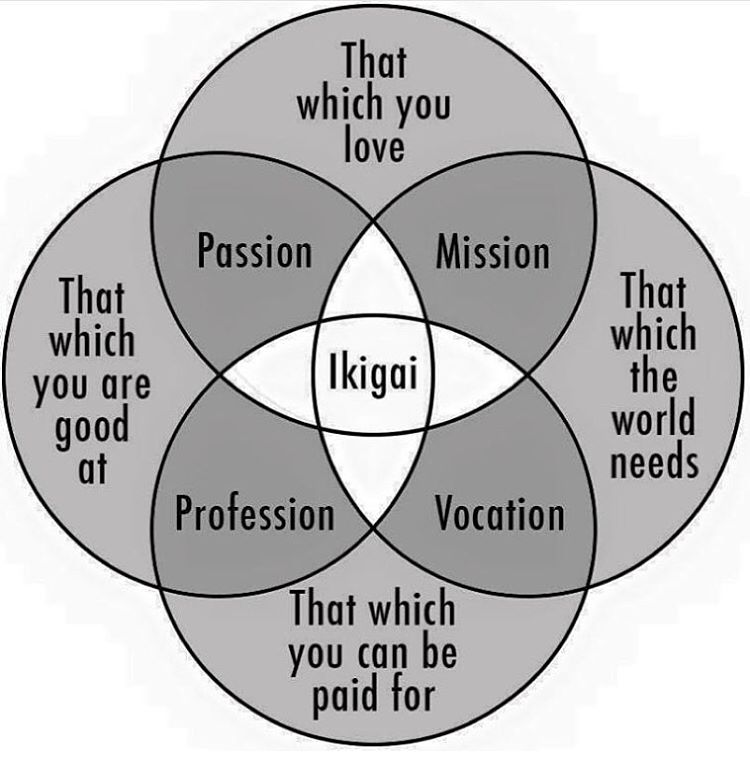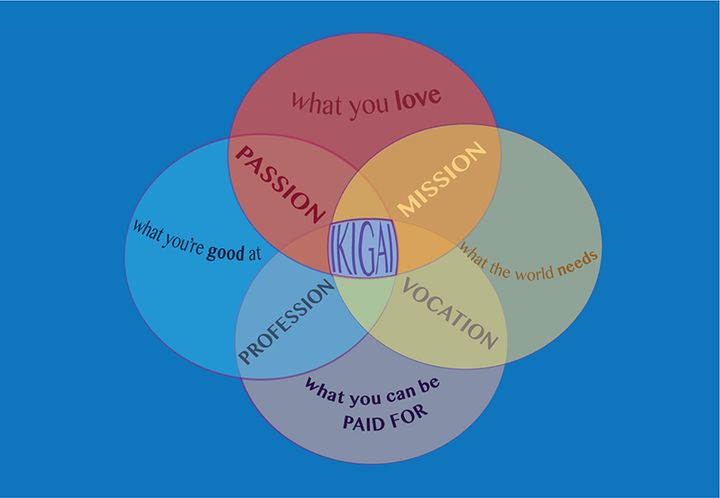
Whether machines and technology make labor unnecessary or a currency collapse makes jobs obsolete is a moot point. Somewhere between Utopia and total anarchy, it’s always important to consider:
- What would you do if you could do whatever you wanted?
- Why would you do that?
Two key questions to consider as you enter a new year. At HeroX, we believe that you can accomplish anything you set your mind to, and probably more. So, an incentive challenge has been created based upon the ideas in this article.
To participate:
- Read this article and utilize the resources.
- Join the Work Worth Doing Challenge.
- Keep us updated throughout 2016 as you change your work (and life.)
- The winners will be featured on HeroX through December 2016!
Resource 1: Ikigai

Ikigai roughly translates to “a reason for being”.
Why do you exist? It won’t do you any good to have infinite free time if you don’t know your life purpose… your personal mission.
This diagram is a helpful tool for any person (or business, or organization, or family) looking to create a foundation to build upon. If you don’t have immediate answers, start this conversation with others and start changing things up in your life. If “That which you are good at” doesn’t have an immediate answer or “That which you are good at” has nothing to do with “That with which you love” you may want to begin to altering your skills (or think critically about what you love.)
If you weren't able to create a list for “That which the world needs”-- the rest of these resources will give you plenty of ideas.
Resource 2: Maximize (healthy) joy and minimize (unnecessary) suffering. +(h)J>-(u)S
This is a radical simplification of morality and existence. It is a math equation that can be applied to any plan or situation.
The parenthetical qualifiers are very important. Health qualifies joy because too often joy is confused with pleasure which can lead avarice or overindulgence which so often leads to (unnecessary) suffering. Similarly, suffering is not as virtuous or unavoidable as some claim it is. Without the struggle, there is no real joy. As Nietzche once said, "the charm of knowledge would be small if so much shame did not have to be overcome on the road to it."
This quote is an efficient example how there is plenty of necessary and beneficial suffering. It’s the unnecessary suffering that one should seek out and minimize. It's an equation for life -- if only companies and governments were bound by this simple heuristic.
How can you utilize this yourself?
What (unnecessary) suffering do you believe you could alleviate? What (healthy) joy do you believe you might cultivate?
Resource 3: Maslow’s Hierarchy
If “Joy” and “Suffering” are a bit vague, Abraham Maslow (one of the top ten most cited psychologists in history) created a great module to help people understanding the fundamental elements of life: this pyramid can be simplified into two categories: infrastructure and well-being. Infrastructure, here, is defined by all the mechanisms that enable biological and emotional health. Well-being is provided for by the services and relationships that enhance and optimize existence.

Infrastructure, in this context, includes food, water, shelter, electricity, internet, programming, and transportation. Examples of well-being would be medicine, fitness, relationships, communication, community, and parenting. At what infrastructure development skill do you excel? How might you specialize in well-being?
By pursuing excellence in at least one infrastructure skill and one well-being skill, this is a sure way to engage yourself with work worth doing.
Resource 4: Archetypes
Maslow’s Hierarchy organizes the fundamental elements of life. But what are the fundamental roles of life? If the elements are what needs doing? Who does the doing? This is, of course, ripe for debate. There are a variety of modules which attempt to distill human roles down to approximately a dozen archetypes. Knowing that, have fun finding a module you like and then find which archetype resonates with you. These resources can often provide you with insights into yourself and others as you study the archetypes.
For a crash course enjoy this slide presentation or this quiz. Once you select an Archetype, think of some real people who embody that as well, who can serve as good role models.
Resource 5: Reality is Broken
With the first five resources, you should have a pretty good idea about what, why, where, and when…
Reality is Broken by Jane McGonigal is a spectacular manual for "how."
An expert in positive psychology (the field of study focused on learning how individuals and communities thrive) Jane McGonigal presents a riveting and concise formula for leveraging insights gleaned from the game industry to make problem solving and living more fun and more effective. In her book, she details 14 “fixes” for reality, summarized here.
She doesn’t claim the term “gamification”, but this book is a great guide to gamifying anything. The routine of life and your work can be more rewarding and exciting than an epic boardgame, or the latest relase for Xbox One, and this book demonstrates how to make that happen. For more on play, listen to this.
Resource 6: Dreamlining
Building on what you have done so far, it would be a good time to “dreamline." Write out, in detail, one day in your ideal life, and be specific. Start with where and how you wake up. What’s breakfast? When do you go to work? How do you get to work? Do you work? What you are writing is a detailed review of an ideal average day -- not the best, most indulgent day ever, but rather a sustainable, realistic account of how you would spend each moment of your ideal average.
Then, how would your ideal average week look like? If you're doing this already, you might be nearer to your dream life than you realize. Is your life nothing like your dreamline? What would be the first steps to change that?
It’s too easy to complain about your day to day, but, unless you lock down your desired changes, you’ll never be able to make the steps towards a life where you are more content and actualized. You probably know all this. You’ve probably heard all this before.
But seriously, write it down.
Resource 7: Happiness = Reality/Expectations!
You may have created some great expectations while dreamlining, but remember: happiness and contentment is possible every day. The Journey is as important as the destination. The only things stopping you from enjoying your present as you build your dreams are your expectations of reality. There is nothing wrong with great expectations, but learning how to appreciate what you have is a way to ensure that you’ll appreciate what you aspire to have.
[If you were wondering why “work” might be “necessary” to anyone, research has shown that, for satisfaction, people thrive when their life is one that allows for purpose, identity, fulfilment, creativity, and autonomy.
Complete this checklist to enter into the Work Worth Doing Challenge:
Work Worth Doing Checklist
- Do you know your life purpose? Your Ikigai?
Write your purpose. Draw your Ikigai.
- Does your work increase health or joy?
Write an explanation.
- Does your work address or prevent unnecessary suffering?
Write an explanation.
- What is your Archetype?
Find a picture or an object that reminds you of this.
- Who is your role model?
Acquire a picture or object that reminds you of them.
- Gamify your life or your program using the 14 fixes from Reality is Broken.
The 14 Fixes.
- Write out your Happiness Equation. H=R/E.
Fill in the variables, Happiness=Reality/Expectations.
- What is your primary creative pursuit?
Pick one activity that exercises your creativity.
- Do you feel a sense of accomplishment +4 days out of every week?
Keep a binary record somewhere. Simple as placing an (!) on your calendar.
- Would your friends or family join you in your work without pay?
Try it out.








